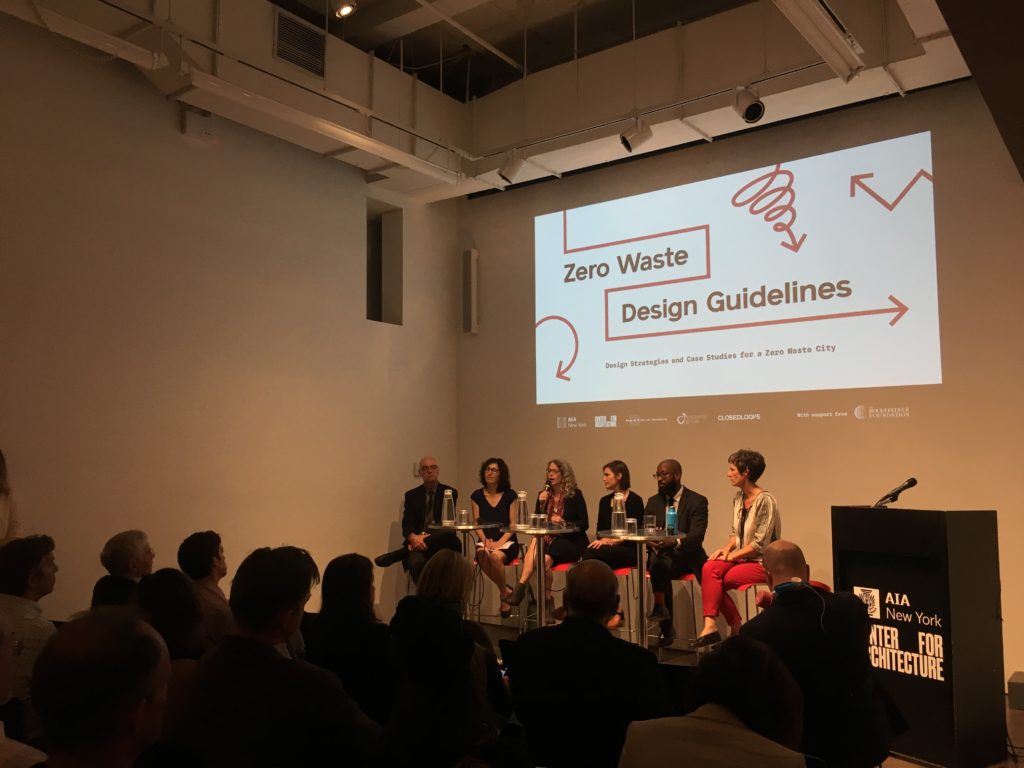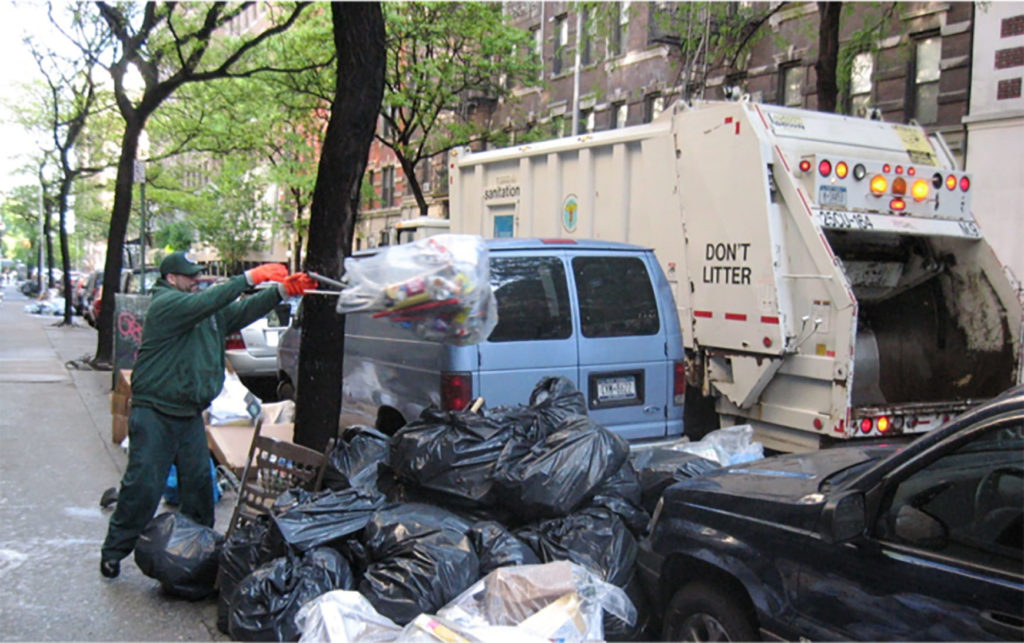Zero Waste Design Guidelines Help NYC Send Less Waste to Landfills

As part of Archtober, new Zero Waste Design Guidelines were launched at the Center for Architecture on October 18. The Guidelines are an initiative of the Center for Architecture, in collaboration with the AIA New York Committee on the Environment, Kiss + Cathcart Architects, ClosedLoops, and the Foodprint Group. While specific to New York City and the goals set forth by this administration in the OneNYC Plan (released in April 2015), the Zero Waste Design Guidelines are intended to serve as a model for designers and municipalities everywhere. As the team argued at the Guidelines launch, if New York can demonstrate the effectiveness of this kind of thinking and designing, it paves the path for others to follow in curbing waste generation, diverting more waste, and using compactors and other volume reduction equipment.
Aligned with the City’s goal of cutting back the waste sent to out-of-state landfills to zero by 2030 (0x30), initiatives have spawned across sectors and scales to tackle this problem from multiple angles. The NYC Department of Sanitation (DSNY) is in the process of rolling out a citywide Organics Collection program in addition to recycling metals/plastics and papers, e-cycling, and re-fashion bins in residential buildings in an effort to cut down the volume sent to landfills. As building managers and supers are retooling the systems to separate, handle, store and collect waste flows in individual streams/ schedules/ requirements, the Zero Waste Design team studied lessons learned in other cities, orchestrated building visits and workshops with various stakeholders to identify the existing typologies, and developed design and management strategies for architects and building professionals to incorporate as new standards of practice.
Published in a dynamic and design-forward website, the team developed a calculator for architects to make informed design decisions based on volume for each stream, supporting organics collection and recycling in the buildings they design from the outset. The Guidelines are premised by the idea that design affects human behavior. Juliette Spertus, a co-founder of Zero Waste Design Guidelines collaborator Closed Loops, and visual storyteller Valeria Mogilevich investigated the behavior management that is already taken on by building supers in tours and interviews. To maintain safe and efficient separation, handling, storage, and collection of waste material, some supers have developed their own habits of “double sort” to essentially check the work of their tenants, and communication systems including signage and illustrations to clarify processes and acceptable materials for each stream. The Guidelines maintain that this kind of behavior modification can be achieved through design to “incorporate economic and social incentives for wasting less and recycling more.”
Similar conversations have been echoing throughout the city as part of the 0x30 initiative. Last November, as part of Maintenance Art, an exhibition of Mierle Laderman Ukeles’s work, the Queens Museum convened “voices that are rarely heard from but are critical to the success of this initiative,” specifically, those of residential building supers, in a public program called “Garbage: The Future.” Setting building maintenance staff and Sanitation employees in conversation brought light to the often invisible connections between our personal waste bins and our waste’s incorporation with that of the general population.

Rear load truck collecting waste door-to-door
Design shapes our world and our waste, but waste assessment can also shape the design of our products and their flow through our lives. From the curb and into the recycling plant, consumer habits are evidenced by packaging and disposable products. In volume, these artifacts of habits carry the potential to radically rework the City’s garbage and recycling infrastructure based upon how they are sorted in our buildings and by processing machinery in the recycling plant. Panelists pointed out one example of machinery telling us something about our waste habits and shifts in packaging design: baby food jars have been replaced by squeezable packets. The ripple effects of these studies are suggested by the stakeholders invited to the Zero Waste Guidelines development meetings. In addition to architects, developers, consultants, city agencies, housing agencies, building managers, and commercial carters, equipment manufacturers were brought to the table.
By focusing on the flow segment between the consumer, building waste stream, and garbage collection, the Zero Waste Design Guidelines hold the potential for streamlining configurations of waste movement inside our buildings, and extend in both directions to small-scale design and on the other end, the way our buildings and cities are designed and built. As the Guidelines were launched in an architecture context, we must acknowledge that construction waste is the largest contributor to landfills in the United States. In 2014, 534 million tons of Construction and Demolition Debris were generated, compared to the 258 million tons of Municipal Solid Waste in the U.S. in the same year.
How might the examination of products at the personal waste stream level inform the products and materials that are used or discarded in the construction process? Will urban planning consider the potential of public space currently conceded to heaps of bagged trash and recyclables on the curb? What would new infrastructure look like in our buildings and on our streets, in our plazas, and in our parks, that relate to more efficient processing and disposal? Is this the future of design standards for master plans, urban renewal projects, and street design? The connections between our consumer habits, waste, and public space are more complex and ripe with potential than we may have thought, and the conversation continues with the Zero Waste Design Guidelines team on December 4 with Open House New York as part of their Getting to Zero initiative.





